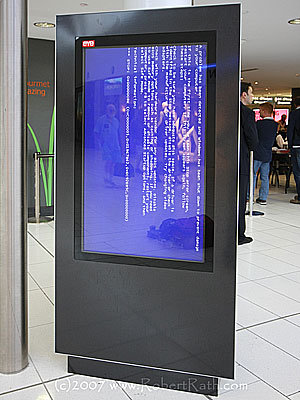 ‘A problem has been detected and Windows has been shut down to prevent damage to your computer…’
‘A problem has been detected and Windows has been shut down to prevent damage to your computer…’
I am sure that this is not the message the vendor intended to send to thousands of Sydney travellers recently.
There it is though, the exasperating Microsoft ‘blue screen of death’ we all know and love to hate, leaving countless passers-by wondering who is the least competent player here. The vendor? Sydney Airport? Microsoft?
We users have come to terms with the blue screen of death and live with it in our day-to-day computing endeavours.
What creative strategies we have developed to manage the problem, ranging from calling IT support to cycling the power switch. And we do it immediately!
Placing in public a product that not only runs the well-known risk of crashing, but has no-one or no way to correct such a problem immediately, is just plain risky.
I wonder how many people got the message ‘incompetence’ before this display was corrected?
Risk Management 101
The two classic risk management questions which should have been asked by the vendor before allowing this product into public space are:
a) what is the risk of this product failing, and
b) what is the impact of this product failing?
If risk and impact are low, the risk is inherently well managed.
If one of the answers is high and the other low, a judgement call is needed to manage the risk and its implications should be well understood.
This is clearly an example of high risk and high impact.
In this case, the vendor is probably getting the advertising it deserves. (Humbly in my opinion.)
…Robert






Perhaps because it is "only advertising", they were prepared to risk the airing of the occasional bluescreen in public. It saves having to pay for risk analysis and management up front?
Risk mitigation can be quite straightforward too: such as setting up a desktop wallpaper with the message "maintenance in progress…" so that should the primary application fail, the public sees the maintenance message as oppose to the Windows desktop (not that that would help in this case).
The biggest problem in managing risk is in knowing what could go wrong!
Given the public sensitivity to problems with Microsoft Windows I would have thought this one was obvious. ‘The system will crash’ … ‘we will manage it elegantly’.
Simply asking the right question to the right person (not so simple at all actually) may provide a simple solution.
Boot Windows from a read-only drive and set Windows to automatically re-boot on crashing.
Risk managed!
Robert